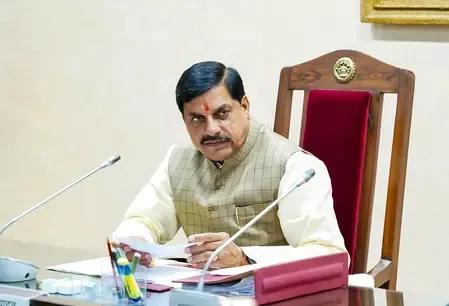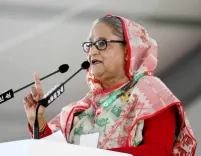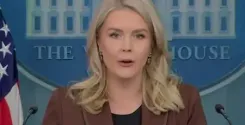Is India's Growth Story Truly Safe, Secure, and Stable?

Synopsis
Key Takeaways
- India's foreign exchange reserves have reached a six-month high.
- India is recognized as the fastest-growing major economy globally.
- The RBI has greater flexibility to stabilize the rupee amidst increasing reserves.
- IMF forecasts indicate promising growth rates for India.
- Global economic challenges persist, particularly for the US.
New Delhi, April 27 (NationPress) - In a recent event, Commerce and Industry Minister Piyush Goyal emphasized India's robust foreign exchange reserves, asserting the nation's status as the fastest-growing major economy globally, which is successfully attracting both global and domestic investments.
"India's growth narrative is safe, secure, and stable," Goyal stated during his speech at an event hosted by prominent mutual fund managers and financial advisors in the capital.
He noted that through initiatives like 'Make in India', the country has become increasingly integrated into global supply chains, leveraging its competitive advantages and enhancing manufacturing capabilities.
His remarks come as India's foreign exchange reserves have surged for the seventh consecutive week, reaching a six-month peak of $686.15 billion as of April 18, according to the latest data from the Reserve Bank of India.
The reserves increased by $8.3 billion for the week ending April 18, following a remarkable rise of $39.2 billion in the preceding six weeks.
A rise in the nation's foreign exchange reserves strengthens the rupee against the US Dollar, which positively impacts the economy.
With the recent increase, the rupee has shown resilience.
Growing foreign exchange reserves provide the RBI with greater flexibility to stabilize the rupee during periods of volatility.
The RBI can intervene in both spot and forward currency markets by releasing additional dollars to prevent the rupee from plummeting.
On the other hand, a drop in forex reserves limits the RBI's capacity to support the rupee.
A report from the IMF, released last week, indicates that India remains the fastest-growing major economy, projected to achieve over 6 percent growth in the next couple of years.
The IMF forecasts India's economic growth rate at 6.2 percent in 2025 and 6.3 percent in 2026, significantly outpacing China's growth forecast of 4 percent for 2025 and 4.6 percent for 2026.
In contrast, the US, amidst ongoing tariff challenges globally, is expected to see its GDP growth slow to 1.8 percent this year, further declining to 1.7 percent by 2026, according to the IMF.









